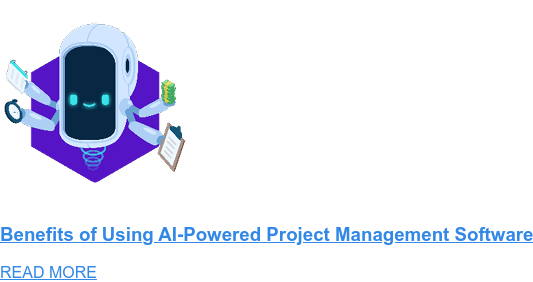9 Best Practices for Ensuring That Your Project Estimates Will Hold Water

In this post I'll cover 9 best practices for ensuring that the estimates you create for your organization's projects will in fact hold water so you are not caught off-guard with a project that suddenly crashes and burns. An estimation checklist if you want.
Using the practices below will ensure that your organization has a better bottom line, more control, better utilization and more efficient resource allocation.
Let's get started...
1. Is the approach you use documented and known?
- What: Estimating practice should be based on a recognised, documented and quantifiable method. This can range from the simplest breakdown to more advanced calculation models.
- Why: Ensuring that the practice used in the company is based on the same process enables future reuse of data and more certainty in project estimates.
2. Do you use multiple estimating techniques?
- What: Preferably more than one estimating method or technique should be used to estimate the size of the project e.g. a breakdown combined with a parametric method.
- Why: If multiple techniques are used for estimating the time and cost for the same project they can be used to cross-check the results, thus injecting more confidence and certainty into the estimate as a whole.
3. Do you record actuals from previous projects that can be matched and reused?
- What: Estimates should be supported by factual historical data of estimates and actuals from previous projects. This can preferably be from your own company history but also from publicly and privately collected datasets.
- Why: Learning from past mistakes and success is key to improving future estimates. Creating new estimates based on this knowledge injects confidence, ensures that you can measure your performance. Without this knowledge estimates just becomes pure guesswork, which is not a sustainable way forward for any organization.
4. Is the source and confidence around historical data known and/or clearly documented?
- What: The source and quality of the historical data should be known to judge whether it is reliable or not.
- Why: If there's no structure around estimating and the dataset used is not reliable, then it cannot be used to learn and improve from. This is why it's preferred to use your own company data or second best to buy a dataset from a trusted vendor. If you don't have this data for your organization you should start collecting it immediately!
5. Who typically estimates?
- What: Estimates should be carried out by one or more practitioners/Subject Matter Experts (SME) with experience in the particular business/technology/environment. It is clearly preferable if it is the one who will be carrying out the work.
- Why: The person creating the estimates should have some domain knowledge to be qualified in estimating tasks within the domain e.g. a chemist cannot reliably determine how long it will take to build a jet engine. If the person estimating is also to deliver on the promises the chance of more reliable estimates/project success are higher as well.
6. Are confidence levels measured and evaluated?
- What: Estimates should include a confidence level for any quoted estimate and it should grow through the bid and execution/delivery process.
- Why: Confidence levels ensure that an informed decision on whether to trust the estimate or not can be made.
7. Who completes independent review for your projects?
- What: The estimates should undergo independent review at set milestones e.g. before project initiation, after x number of sprints or x amount of time.
- Why: This ensures that we can keep track and control of the project as well as eliminating "fixed" numbers when reporting to management.
8. Does your company have a central repository of estimates and all of their assumptions and updates through the project life cycle including feedback of actuals?
- What: The estimates and assumptions must be documented and preserved as a baseline for future monitoring and reference.
- Why: A central repository of project data ensures reuse and continuous performance improvements. It also enables better root cause analysis of why a project ended as it did.
9. Do you keep an audit trail of changes and approvals?
- What: All estimates and approvals should be recorded so they can be traced back to their origin.
- Why: This ensures that scope creep and other undocumented changes easily can be identified during the project life cycle.
Doing the things listed above will ensure a continuous performance improvement both in project resourcing and accuracy of actual time & cost spent on new projects, thus more bottom line dollars.
Subscribe to the Forecast Newsletter
Get a monthly roundup of productivity tips & hacks delivered straight to your inbox
